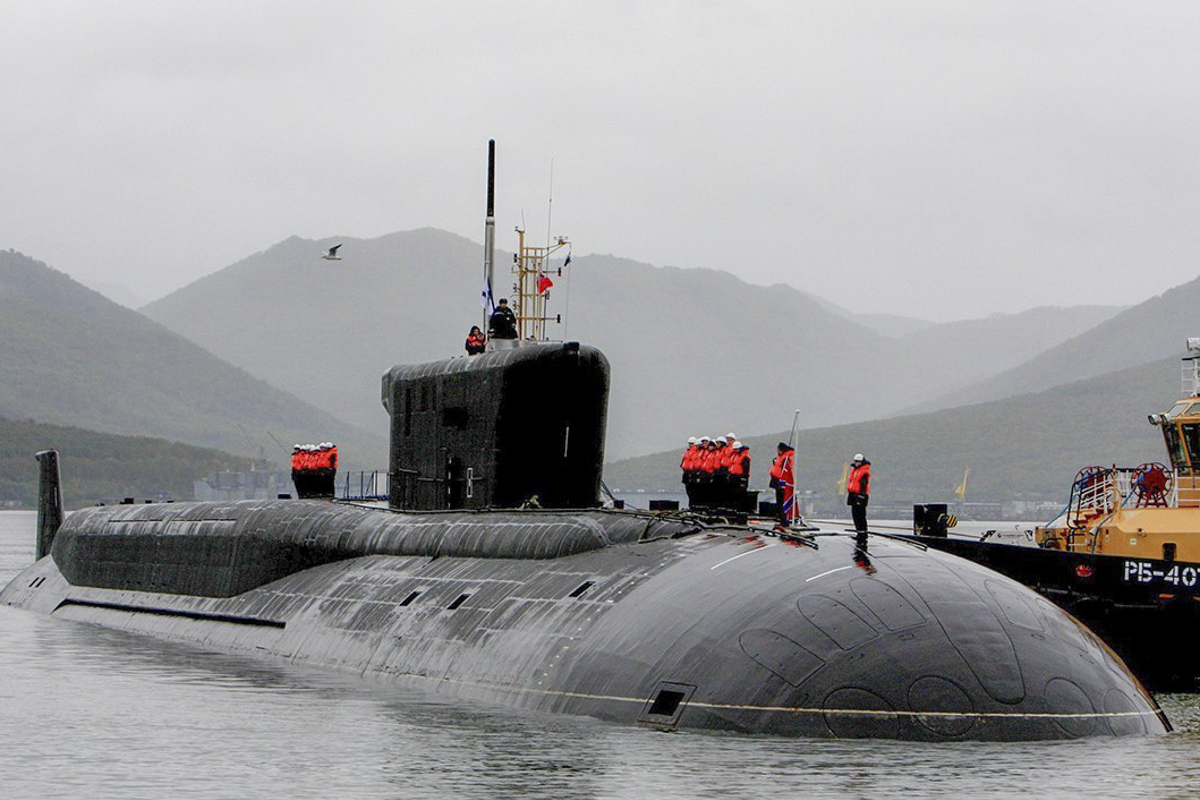Amid increasing tensions between the US-led West and Russia, notable advancements related to Russia’s Avangard hypersonic glide vehicle and Borei-class submarines have come to light, presenting potential concerns for the United States and its allies.
US Calls Chinese ASAT Missiles ‘Biggest Threat’ To The Country That Poses ‘Double Trouble’ In Space
Russian “Borei-class” strategic nuclear submarines possess an underwater sonar system extending their detection capabilities beyond the capabilities of their American counterparts by 1.5 times, claimed State-owned media outlet Ria Novosti.
The report, citing a Russian defense magazine article, highlighted the crucial advantage of the Borei-class submarines in detecting enemy ships.
The hydroacoustics system, named Irtysh-Amphora-B-055, surpasses the capabilities of advanced American fourth-generation multipurpose nuclear submarines like the Virginia class and the Ohio-class SSBNs.
Editor-in-chief Victor Murakhovsky, in conversation with Russian media, said that the Borei sonar system exceeds the detection range of US nuclear strategic submarines by approximately 100 kilometers.

The Irtysh-Amphora-B-055 system onboard Borei submarines offers multifunctionality, enabling simultaneous tracking of at least 30 underwater targets.
Comprising the primary hydroacoustic antenna, “Amphora,” side antennas, and a towed antenna, this complex employs digital signal processing for noise direction finding, echo direction finding, and target classification.
Beyond detecting enemy submarines, torpedoes, and mines, the system contributes to Arctic operations by measuring ice thickness and identifying polynyas for surfacing or missile launches.
The Russian Navy currently operates six submarines from projects 955 and 955A. This comprises Yuriy Dolgorukiy, Alexander Nevsky, and Vladimir Monomakh as part of Project 955, along with Knyaz Vladimir, Knyaz Oleg, and Generalissimus Suvorov from Project 955A.
Sevmash, the manufacturing enterprise, is constructing three more 955A boats: Knyaz Pozharsky, Dmitriy Donskoy, and Prince Potemkin.
Besides that, Russia’s new nuclear-powered submarine Imperator Alexander III, a Borei-A submarine, was launched in December 2022 and is presently undergoing tests. Scheduled to join the Pacific Fleet by the end of 2024, it represents a pivotal addition to the Russian naval arsenal.
Russia Expands Avangard Complex Infrastructure
On November 16, the Russian defense ministry released a video showcasing the transportation of a missile equipped with an Avangard hypersonic glide vehicle (HGV) warhead to a launch silo at the Dombarovsky missile base in the Orenburg region near Kazakhstan.
Jačaju ruske Raketne snage strateške namene: Nastavlja se opremanje jedinica hipersoničnom raketom #Avangard
Sprovođenje mera planiranih za 2023. godinu povećava borbene sposobnosti strateških nuklearnih snaga Ruske Federacije.#Rusija #RuskaVojska #MinistarstvoOdbraneRusije pic.twitter.com/e0JDykK5TE
— Sputnik Србијa (@rs_sputnik) November 16, 2023
This video, aired on Zvezda TV, depicted the slow ascent of the missile into a vertical position and its subsequent descent into the silo shaft.
In a statement, the Ministry of Defense of the Russian Federation has declared the completion of infrastructure preparations for the position area, encompassing facilities for personnel training, duty shifts, combat readiness, and rest.
The Ministry underscores that implementing planned measures in 2023, aimed at re-equipping the Strategic Missile Forces with a missile system featuring a hypersonic unit, is expected to significantly enhance the combat capabilities of the country’s strategic nuclear forces.
The Avangard, introduced by President Putin during his 2018 Presidential Address to Russia’s Federal Assembly, is part of a series of “next-generation” weapons to bolster Russia’s strategic capabilities against current and future US air and missile defenses.
The Avangard HGV, alongside other super weapons like the Burevestnik nuclear-powered cruise missile, Zircon and Kinzhal hypersonic missiles, Poseidon unmanned underwater vehicle, and Sarmat super-heavy ICBM, represents a significant advancement in Russia’s military capabilities.
As a hypersonic weapon, the Avangard glide vehicle detaches from the rocket as it approaches its target, allowing it to maneuver sharply at hypersonic speeds, reaching up to 27 times the speed of sound.
Russia claims the Avangard’s range exceeds 6,000 kilometers, with a weight of around 2,000 kilograms and the option for either a 2-megaton nuclear or conventional high explosive warhead.
According to the Center for Strategic and International Studies missile threat project, there are no publicly available images of the Avangard HGV, and descriptions are limited to the artist’s impressions, suggesting a short wedge-shaped design without a separate propulsion system, relying on gravity and aerodynamics for velocity maintenance after an initial boost.
The first Avangard regiment commenced combat duty in December 2019 at the same Orenburg facility.
In December 2022, reports confirmed the activation of the second missile regiment within the Orenburg division of the Strategic Missile Forces, assuming combat duty with a command post and two silo launchers (SLBMs) housing ICBMs equipped with Avangard combat technology.
Over the following two years, the regiment will integrate two more Strategic Missile Launchers (SHPUs) into each launcher, aligning with the standard complement.
- Contact the author at ashishmichel(at)gmail.com
- Follow EurAsian Times on Google News